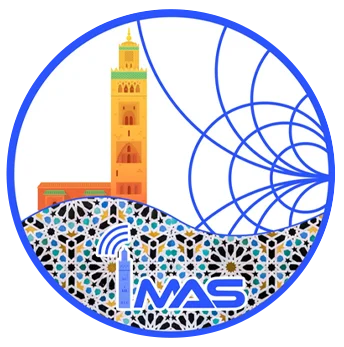- International Microwave & Antennas Symposium (IMAS 2024) October 21-24, 2024 I Marrakech, Morocco

Tutorial 1: How to Write a Paper for IEEE Journals and Navigate the Review Process

received the B. E. E. degree from Cleveland State University, Cleveland, OH in 1983, the M.S.E.E. degree from Case Western Reserve University, Cleveland, OH in 1987, and the Ph.D. in electrical engineering from the University of Michigan, Ann Arbor, MI in 1997.
He joined the staff of the Communications, Instrumentation, and Controls Division at NASA Glenn Research Center, Cleveland, OH in 1983 where he was a senior research engineer; he is now retired. In 1997-1998 and in 2000-2001, he was a visiting professor at Case Western Reserve University in Cleveland, OH. He has authored and co-authored 200 papers in refereed journals and symposia proceedings.
Dr. Ponchak is a Fellow of the IEEE. He was the Editor-in-Chief of the IEEE Transactions Microwave Theory and Techniques from 2010-2013 and the Editor-in-Chief of the IEEE Microwave and Wireless Components Letters from 2006-2009. He was an elected member of IEEE MTT-S Administrative Committee (2010-2018), served on the Editorial Board of MDPI Sensors journal (2018-2022) and of the International Journal of RF and Microwave Computer Aided Engineering (2005-2019). He received the 2014 MTT-S N. Walter Cox Award that recognizes an IEEE MTT-S member who has given exemplary service, the 2023 IEEE MTT-S Distinguished Service Award and the Best Paper of the ISHM’97 30th International Symposium on Microelectronics Award.
The careers of many people depends on their success in writing and getting their papers published. More important, the scientific process requires that scientific findings be published so that other researchers may build on your ideas or refute your findings. If authors are not able to publish their papers, then their careers are hurt and scientific progress slows and stops. Therefore, it is critical that researchers and engineers understand the process of writing and getting published their papers in reputable and cited journals and scientific conferences. However, often authors’ papers are rejected because they did not understand what reviewers, Associate Editors, and Editors are looking for in a paper, even if the technical results are good.
This presentation will cover the steps that an author should take to increase the acceptance rate of their papers in journals and conference. It will cover the reasons most papers are rejected and how an author should organize their paper to avoid those reasons. Lastly, it will present what steps you should take if your paper is rejected to get it published in the same journal or in a different journal.
